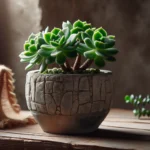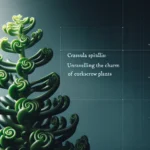Introduction to Crassula Falcata
Imagine a plant that not only captivates with its geometric beauty but also ignites the imaginations of gardeners and collectors alike. The Crassula Falcata, or the ‘Propeller Plant’, is one such marvel of nature. With its intriguing propeller-like leaves that seem to soar skyward, it’s not just any other succulent on the block—it’s a living sculpture!
Oftentimes, when we think of succulents, a homely cactus or jade plant might spring to mind. However, the Crassula Falcata is turning heads with its steely gray-green foliage and aeronautical flair. Native to South Africa, this plant has traversed oceans and continents to find its place in the hearts of indoor plant enthusiasts and dry climate gardeners alike.
But it’s not just its appearance that’s appealing. The Propeller Plant is a case study in resiliency and adaptability. Thriving in the arid environments of its homeland, this succulent demands very little yet offers much in the way of aesthetic value. It’s as if it’s tailor-made for the modern minimalist, or for those who appreciate beauty with little fuss.
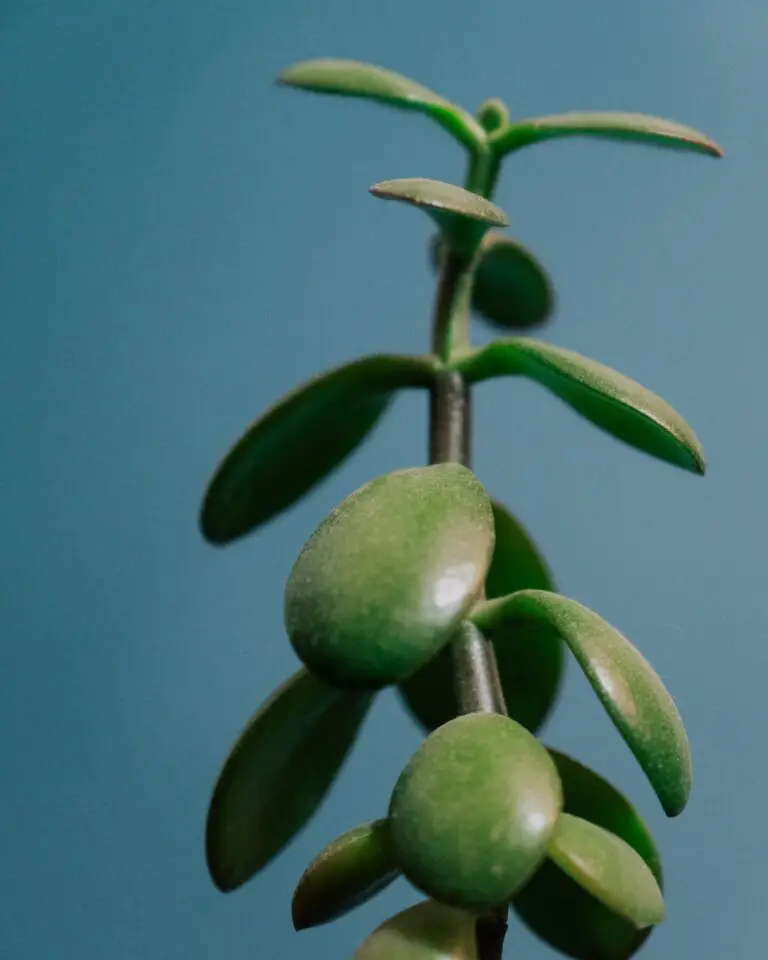
For those looking to add a touch of the extraordinary to their green collection, the Crassula Falcata often becomes a centerpiece. Its appeal intensifies when it bursts into bloom with clusters of small, scarlet flowers that juxtapose beautifully against the greenery. Even when faced with limited urban spaces, this soaring succulent finds its way to shine—a lesson in making the most of what you have, much like urban gardeners do.
Its growing popularity isn’t without reason. Easy-going yet striking, the Propeller Plant aligns with the desires of a new generation of plant lovers seeking the unconventional. In-depth guides on Crassula Falcata care highlight its undemanding nature when it comes to light, water, and soil conditions—adaptable indeed to fit the busy lifestyles of its admirers.
Distinctive Features of Crassula Falcata
The Propeller Plant, with its signature overlapping leaves, brings to mind the blades of an aircraft’s propeller. It’s no wonder that its aerodynamic form catches the eye of artists and designers looking for natural inspiration. Unlike other plants that may wilt under pressure, the Crassula Falcata stands resilient, an emblem of strength and structure, for those aspiring to embody these qualities in their own lives.
From rocky terrains in South African cliffs to upscale urban apartments, the Crassula Falcata’s journey is as remarkable as the plant itself. It invites a curious mind to delve into the origins and quirks of this unique species, drawing parallels between the survival strategies of plants and people alike. It’s a botanical wonder that epitomizes the harmony between form and function, between nature and artistic expression.
Identifying the Propeller Plant
Amidst a sea of succulents, the Crassula Falcata stands out with its aerodynamic allure. Its leaves, akin to the blades of a propeller, spiral symmetrically from the stem, creating a visually striking display that’s hard to miss. The foliage flaunts a grey-green palette, and when the sun is just right, they appear as if they’ve been dusted with a silvery sheen.
When in bloom, Crassula Falcata turns heads with its vibrant scarlet flowers that cluster at the tips of the branches. These blossoms are not just a feast for the eyes; they also serve as a siren call to pollinators far and wide. It’s not unusual to find a buzzing community of bees and butterflies flitting around, drawn by the vivid red beacons.
Imagine walking through a greenhouse or a well-tended garden patch. Among the greenery, the propeller plant asserts its dominance with its distinct foliage orientation. One might even liken it to a squadron of tiny green aircraft, meticulously lined up and ready for takeoff.
For those looking to cultivate their own squadron, proper care is key. Crassula Falcata enjoys a sunny perch, and when grown indoors, a south-facing window is prime real estate for this sun-loving succulent. To dive deeper into tending to these high flyers, check out this comprehensive guide on Crassula Falcata care. True to its hardy nature, the propeller plant thrives with minimal fuss, asking for nothing more than the right light and a good soak when its soil goes dry.
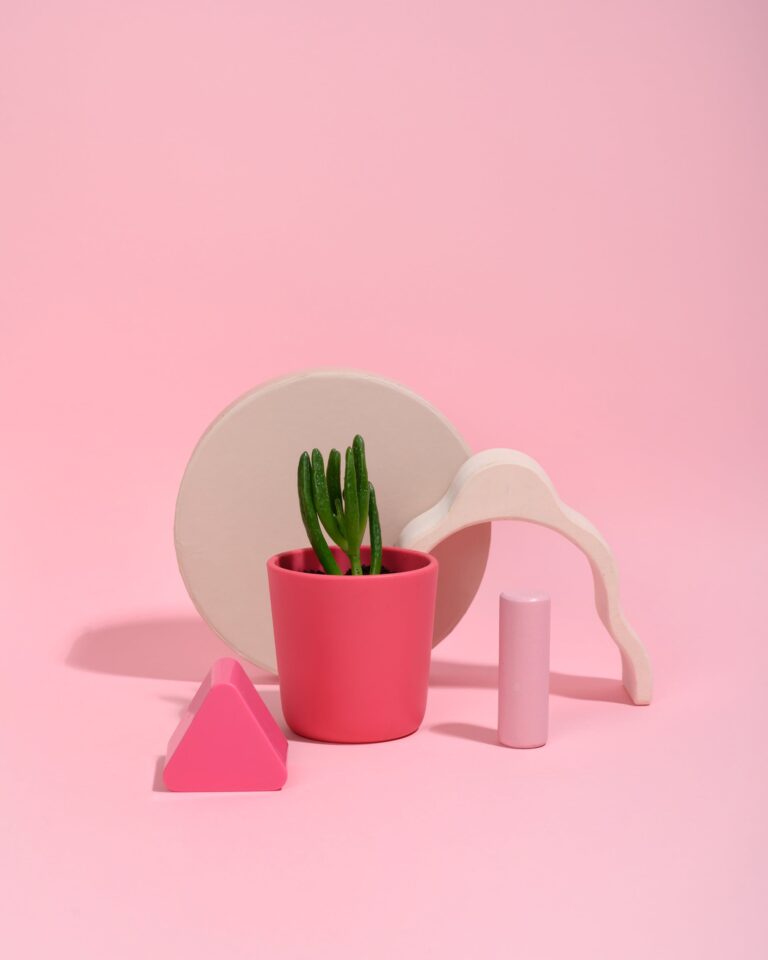
In your own space, envision a corner that could use a touch of architectural intrigue. The sculptural form of Crassula Falcata could be the perfect botanical counterpart to enhance your abode’s aesthetics, all the while bringing a snippet of the outdoors inside.
Optimal Growing Conditions for Crassula Falcata
Welcome to the high-flying world of Crassula Falcata, also known as the ‘Propeller Plant.’ This unique succulent is a cloud-skimmer among its kin, with leaves that mimic an aircraft’s propellers—ready to take off into the abyss of your garden or living room. But before this botanical beauty soars, let’s talk about what it takes to keep it aloft with the right light, temperature, and soil mix.
Light: The Beacon for Growth
Think of light as the runway for Crassula Falcata’s takeoff. This succulent is a sun-seeker at heart, basking gloriously in a lit environment. For a plant that’s on cloud nine, place it in an area where it receives a copious amount of bright, indirect sunlight. A south or west-facing window sill is your best bet. Just like a pilot avoids turbulent weather, steer clear of direct midday sun to prevent scorching the leaves, akin to a plane ducking under a storm.
Temperature: The Cruising Altitude
The comfort zone for Crassula Falcata’s flight is a temperate climate, much like a steady airliner high above the clouds. Thriving in temperatures ranging from 60 to 85°F (15 to 29°C), it can handle a bit of variability but does not fare well with frost. If the mercury dips too low, the succulent’s leaves may drop like distress signals. Keep it cozy and ensure it doesn’t encounter the harsh chill of winter drafts or the scorching heat of summer afternoons.
Soil: The Airstrip for Roots
Your Crassula Falcata’s roots require a runway that’s well-draining—think of a gravelly airstrip rather than a waterlogged marshland. A lean, sandy soil mix with a pH that’s neutral to slightly acidic sets the stage for an ideal takeoff. You want the water to drain as swiftly as airplane passengers eager to deboard after a long flight—not lingering to cause root rot or fungal diseases. This ensures a smooth ascent to healthy plant growth.
Navigating Care with a Visual Guide
To help you become an ace in succulent care, why not watch this handy visual guide? It’s the co-pilot you need to navigate the nuances of Crassula Falcata stewardship.
With these optimal conditions, your Crassula Falcata is all set for an exhilarating flight. Remember, every plant has its own character—some may prefer a little more shade, others a touch more humidity. Observe, adjust, and have fun as you pilot your succulent through its growing journey!
Watering and Feeding Practices for Crassula Falcata
Talk about a succulent that can take your breath away—Crassula Falcata is that plant! Its unique, propeller-like foliage, soaring above other succulents, makes it a standout specimen. But even these high-fliers need the right care to thrive. That’s where smart watering and feeding habits come into play.
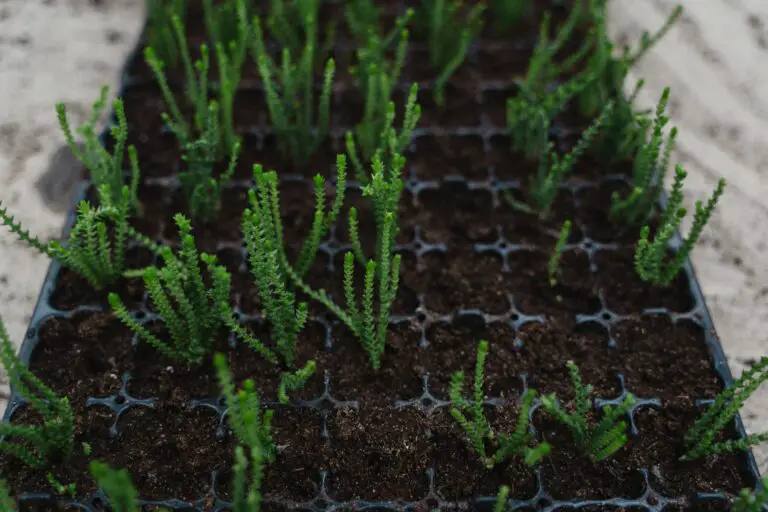
Let’s dive right in—water is a precious resource, especially for succulents. Overwatering is the fast track to a soggy demise, leading to root rot and an untimely end. These plants prefer a drink only when the soil has dried out completely. Think of it as a ‘soak and dry’ method. Imagine watering your Crassula Falcata like you’re waiting for a rare desert downpour—thoroughly saturating it and then letting it bask in the drought until the next round.
Feeding your succulent is less about quantity and more about quality. A balanced, water-soluble fertilizer during the growing seasons—spring through fall—will work wonders. You wouldn’t give a performance car just any old fuel, right? Treat your Crassula Falcata to the good stuff, and it will repay you by flourishing.
While Crassula Falcata isn’t a greedy plant, it’s important to understand its feeding needs. Incorporated into every other watering, a half-strength dose of that nourishing fertilizer ensures your plant isn’t overwhelmed. It’s like a well-timed snack rather than a feast, keeping it healthy and happy with just the right amount of nutrients.
Following these guidelines isn’t just guesswork; it’s a tried-and-tested formula for success. Ask any seasoned succulent enthusiast, and you’ll find that these practices are the beaten path for a reason—they lead to a lush, vibrant Crassula Falcata that’s practically showing off. So keep that watering can at bay until it’s time, and your green friend will be on cloud nine!
Propagating Your Crassula Falcata
Embarking on the journey of propagating your Crassula Falcata is like setting sail on a grand adventure. It’s a way to clone your treasured plant, giving life to many more of its kind. Here’s your trusty map to navigate through the seas of propagation, leading you to the treasured growth of new plants.
Preparation: The Foundation of Success
First things first: select healthy leaves or stem cuttings from your existing Crassula Falcata. Look for plump, full leaves—they should be the Arnold Schwarzenegger of leaves in terms of health and vitality. When cutting a stem, make sure to use clean, sharp scissors or pruning shears. Think of it as a surgical procedure: the cleaner the cut, the better the healing.
Step 1: The Callus Period
After removing your leaves or cuttings, it’s crucial to allow them to form a callus. This may seem like a waiting game, but patience is key—usually taking about two to four days. Remember, your cutting needs to toughen up for the world, just like a young knight preparing for battle.
Step 2: The Right Soil for Your Crassula Foot Soldiers
While your cuttings are callusing, prep your pots with the right mix. Succulent soil is their preferred battleground—well-draining and gritty. You want to make sure your new plants will not battle with soggy feet. Too much moisture is the arch-enemy of the mighty Crassula Falcata!
Step 3: Planting the Flag (or Leaf)
Once the callus has formed, it’s time to place your leaf or cutting on top of the soil. Don’t bury them like treasure; instead, let them lay atop the soil like a fallen leaf in autumn. Mist lightly, as if you’re giving them a soft kiss with water.
Step 4: Let the Sun Shine In
Place your potted cuttings in a spot where they can bask in the morning sun like sunbathers on a beach, avoiding the harsh afternoon rays that could make them wither like a pirate stranded in the desert. A bit of sunlight is their vitamin D, essential for strong growth.
Step 5: Behold! The Miracle of Roots
With time, you’ll notice tiny roots reaching into the soil, searching for nutrients like buried treasure. When you see roots, it’s a cause for celebration. Your dedication has paid off, and like a botanical alchemist, you’ve turned a simple leaf into gold—well, green gold.
For visual learners or those craving a deeper dive into the art of Crassula Falcata propagation, check out this informative video. It’s like having a seasoned captain guiding you through uncharted waters.
Pest and Disease Management
As the proud keeper of a Crassula falcata, or Propeller Plant, you’re captaining a ship through the tranquil waters of succulent care. But beware! Just like any vessel, your green beauty may occasionally need to fend off some unwanted stowaways – pests and diseases. Let’s chart a course through the common nuisances that could threaten your succulent and how best to navigate these choppy waters.
Armoring Against Aphids and Mealybugs
Imagine you’re enjoying a sunny day in your garden when you spot some pesky aphids or mealybugs trying to establish their own colony on your cherished Crassula falcata. To send these intruders overboard, a simple blast of water can often knock them off. For a more targeted approach, summon your trusty allies – insecticidal soap or neem oil. These organic options act like a pirate’s cannon, effectively disrupting the pests’ plans without harming your succulent crew. Apply them with precision, and watch the pests walk the plank!
Battling Fungal and Bacterial Foes
It’s not just the crawling critters you have to watch out for; fungal and bacterial foes can silently assail your succulent. Imagine a quiet, encroaching mist settling in the night, a sure sign of powdery mildew or leaf spot disease. To confront these afflictions, reinforcing your plant’s environment is key. Provide ample sunshine and ventilation to clear the fog of potential infection. And if an outbreak occurs, consider applying a fungicide with the precision of a surgeon’s scalpel to excise the problem.
Charting a Course for Healthy Growth
To stay the course to healthy growth, it’s vital to monitor and adjust your succulent’s living conditions. Overwatering is akin to navigating into stormy seas; it’s the mother of all maladies for most succulents, including our valiant Crassula falcata. Steer clear of this pitfall by ensuring your plant has well-draining soil—an essential treasure for any succulent. This will prevent root rot, a villainous condition that ambles up silently from below, delivering a deadly kiss to the roots of your unsuspecting green gem.
Of course, hearing about these tactics is one thing, but seeing them in action is another. Unfurl your sails and check out this visual guide:
Remember, the trick to successful pest and disease management is vigilance and swift action. Keep a weather eye on the horizon and your Crassula falcata will continue to soar, unfettered by the pesky plights that lurk in less chartered succulent seas.
Crassula Falcata in Home Décor
When it comes to infusing your home with a dash of verdant vitality, few succulents can match the architectural elegance of Crassula falcata. Its distinct propeller-like leaves make a bold statement in any interior design schema. Imagine entering a room where the clean lines of modern furniture meet the organic silhouettes of succulent arrangements—it’s a synergy that speaks of both nature and human ingenuity.
A Sleek Centerpiece for Minimalist Themes
In a minimalist setting, where every object is a contemplation on space and form, Crassula falcata stands proud. Placing it on a coffee table or on an unadorned shelf captivates the eye, serving not just as a living organism but as an art piece. For those who revel in the less-is-more philosophy, this succulent is the perfect complement.
Rustic Accents in Traditional Spaces
Now let’s step into a more traditional space—you know, the kind where rich woods and warmer tones are prevalent. Here, our hero doesn’t just adapt, it thrives. Nestled amongst terracotta pots and woven textures, Crassula falcata brings a new dimension to what might otherwise be an expected décor.
Just picture an heirloom oak bookcase, where nestled amongst cherished tomes, a potted Crassula falcata leans towards the daylight, its grey-green foliage a fresh note among the sepia-toned bindings. It’s a conversation starter, a small but intentional nod to the outdoors.
Enhancing Contemporary Arrangements
The ever-changing world of contemporary design also offers a playground for this versatile succulent. Imagine a sleek, metallic planter on a high-gloss white sideboard, where the falcata’s angular leaves reflect light and shadow in equal measure. As daylight wanes and the overheads come on, it’s as if the succulent takes on a new life, its edges highlighted against the stark backdrop.
It’s not just about solo statements, though. Groupings of Crassula falcata at different heights can create an intriguing canopy of green—ideal for filling an unused corner or flanking a fireplace.
For all those looking for ways to bring Crassula falcata into their living spaces, here’s a video brimming with inspiration—visual cues that can help even the most doubtful of green thumbs envision the potential:
Whether you’re a long-time lover of succulents or just beginning to appreciate their potential in home décor, Crassula falcata is a candidate too compelling to ignore. Its ability to complement a variety of design approaches makes it a standout in the succulent world and a must-have for enthusiasts looking to elevate their interior design game.
Crassula Falcata in Home Décor
When it comes to infusing your home with a dash of verdant vitality, few succulents can match the architectural elegance of Crassula falcata. Its distinct propeller-like leaves make a bold statement in any interior design schema. Imagine entering a room where the clean lines of modern furniture meet the organic silhouettes of succulent arrangements—it’s a synergy that speaks of both nature and human ingenuity.
A Sleek Centerpiece for Minimalist Themes
In a minimalist setting, where every object is a contemplation on space and form, Crassula falcata stands proud. Placing it on a coffee table or on an unadorned shelf captivates the eye, serving not just as a living organism but as an art piece. For those who revel in the less-is-more philosophy, this succulent is the perfect complement.
Rustic Accents in Traditional Spaces
Now let’s step into a more traditional space—you know, the kind where rich woods and warmer tones are prevalent. Here, our hero doesn’t just adapt, it thrives. Nestled amongst terracotta pots and woven textures, Crassula falcata brings a new dimension to what might otherwise be an expected décor.
Just picture an heirloom oak bookcase, where nestled amongst cherished tomes, a potted Crassula falcata leans towards the daylight, its grey-green foliage a fresh note among the sepia-toned bindings. It’s a conversation starter, a small but intentional nod to the outdoors.
Enhancing Contemporary Arrangements
The ever-changing world of contemporary design also offers a playground for this versatile succulent. Imagine a sleek, metallic planter on a high-gloss white sideboard, where the falcata’s angular leaves reflect light and shadow in equal measure. As daylight wanes and the overheads come on, it’s as if the succulent takes on a new life, its edges highlighted against the stark backdrop.
It’s not just about solo statements, though. Groupings of Crassula falcata at different heights can create an intriguing canopy of green—ideal for filling an unused corner or flanking a fireplace.
For all those looking for ways to bring Crassula falcata into their living spaces, here’s a video brimming with inspiration—visual cues that can help even the most doubtful of green thumbs envision the potential:
Whether you’re a long-time lover of succulents or just beginning to appreciate their potential in home décor, Crassula falcata is a candidate too compelling to ignore. Its ability to complement a variety of design approaches makes it a standout in the succulent world and a must-have for enthusiasts looking to elevate their interior design game.
Environmental Benefits of Crassula Falcata
Ever heard of a plant that soars in challenging conditions and breathes freshness into the environment? Meet Crassula Falcata, the resilient and remarkable succulent that’s been turning heads with its impressive environmental contributions. Let’s dive into the world of this verdant virtuoso and explore its eco-friendly superpowers.
Say goodbye to the woes of drought-stricken gardens. Crassula Falcata, with its origins in the arid zones of South Africa, is a master of water conservation. Its plump, fleshy leaves are like built-in reservoirs, adeptly hoarding moisture to survive prolonged dry spells. This makes it an ideal green ally for areas frequently whispering for rain, allowing you to cultivate a green haven without straining precious water resources.
But the prowess of the Crassula Falcata doesn’t stop at drought tolerance. This succulent is a known air purifier, working tirelessly to filter out airborne contaminants. Just imagine – amidst the traffic fumes and industrial smoke, these plants are like tiny, green warriors, scrubbing the air clean one leaf at a time. Homeowners can take pride in knowing that by fostering these plants, they’re boosting the air quality around them, making every breath a little bit fresher.
For those looking to witness the majesty of the Crassula Falcata and its environmental benefits, we’ve included an insightful video. It’s not just a treat for the eyes but an educational journey into the care and positive impact of this succulent wonder:
In neighborhoods where concrete often overshadows greenery, introducing the Crassula Falcata can inject a much-needed dose of nature. Residents can create clusters of these succulents on balconies, rooftops, and patios. It’s not just an aesthetic enhancement; it’s a step towards a more sustainable and eco-responsive community. Picture this: A legion of these succulents perched on urban ledges, forming a ribbon of green resilience amidst the urban sprawl.
It’s clear that the Crassula Falcata is more than just a pretty face in the plant world. With its commendable drought resistance and air-purifying qualities, it’s actively contributing to a healthier planet. As gardeners and nature enthusiasts weave this succulent into the fabric of their environmental initiatives, they’re not just nurturing plants – they’re fostering a legacy of sustainability for future generations to cherish.
Troubleshooting Common Issues with Crassula Falcata
Ever wondered why your Crassula Falcata, also known as the ‘Propeller Plant,’ might suddenly go on a leaf-dropping spree or stubbornly refuse to bloom? In the fascinating world of succulents, every twist and wilt tells a tale. Let’s troubleshoot these common quandaries and keep your succulent soaring!
Combatting Crassula Falcata Leaf Drop
Imagine you’ve diligently cared for your plant, and out of the blue, it goes into a leaf-shedding frenzy. Don’t panic; this is succulent drama at its peak and often it’s due to overwatering. These sturdy plants hail from arid regions and are not fond of soggy soil. Ensure you’re letting the soil dry out completely between waterings. Too tight a pot can also make ‘Propeller Plant’ leaves pop off faster than a pilot ejects in an emergency – give those roots room to breathe!
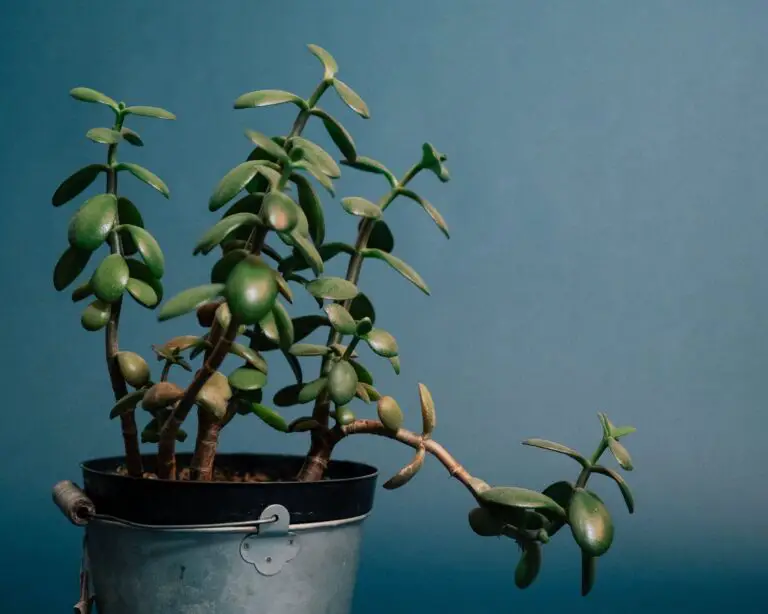
Why Won’t My Crassula Falcata Bloom?
Experiencing a bloom bust? It’s like setting up a grand stage only to have the main performer miss its cue. Crassula Falcata is a bit of a diva, thriving on a strict regimen of tough love – they need a period of cold dormancy to trigger flowering. Try reducing watering and keeping them cool through the winter months. When spring rolls around, treat them with a fertilizer rich in phosphorus to encourage those elusive blooms.
Remember, like a stranded pilot in a desert, your ‘Propeller Plant’ is a survivor. It’s designed to navigate through tough times. With a little troubleshooting, you can help it display its spectacular propeller-like leaves and radiant blooms for seasons to come. Keep a keen eye on watering, watch those temperatures, and provide room to grow. Happy cultivating!
Frequently Asked Questions
Gather round, succulent lovers! You’ve got questions about the gloriously gliding Crassula falcata, and I’m here to dish out the dirt. Think of this as your personal treasure map to the high-flying secrets of caring for these architectural wonders.
How do I make my Crassula falcata flourish?
Caring for Crassula falcata is like being a pilot: you need a steady hand and an eye on the horizon. Imagine your succulent is an airplane; it needs a good runway (a well-draining potting mix), clear skies (plenty of indirect sunlight), and the right altitude (don’t overwater, let it dry out between flights… I mean, waterings!). Stick to this flight plan, and you’ll have your succulent soaring to new heights.
Why are my Crassula’s leaves drooping?
Troubleshooting with Crassula falcata is like decoding a black box after a rough landing. Seeing leaves that look defeated and droopy? It’s often a cry for help against soggy soil or a sign of thirst from too much dry spell. Adjust your watering schedule to fit the climate cockpit – less frequent watering in the clouds of winter, more during the summer sunshine.
Can I give my Crassula a style upgrade?
Styling your Crassula falcata isn’t much different from refreshing your wardrobe. Trimming wayward leaves is like cuffing your jeans for the perfect cool-yet-functional look, and repotting is all about giving your green amigo a new pair of kicks that fits just right. And let me tell you, a well-styled Crassula is like a runway model at Plant Fashion Week!
Did someone say video tutorial? I hear you! Check out this gem I found on taking care of our high-flying friend, complete with visual cues to keep your succulent stylish and robust:
With these questions out of the way, your care and style regimen for Crassula falcata should be more like a smooth glide than a turbulent flight. Keep those leaves perky, and the skies of your indoor garden will always be friendly!

